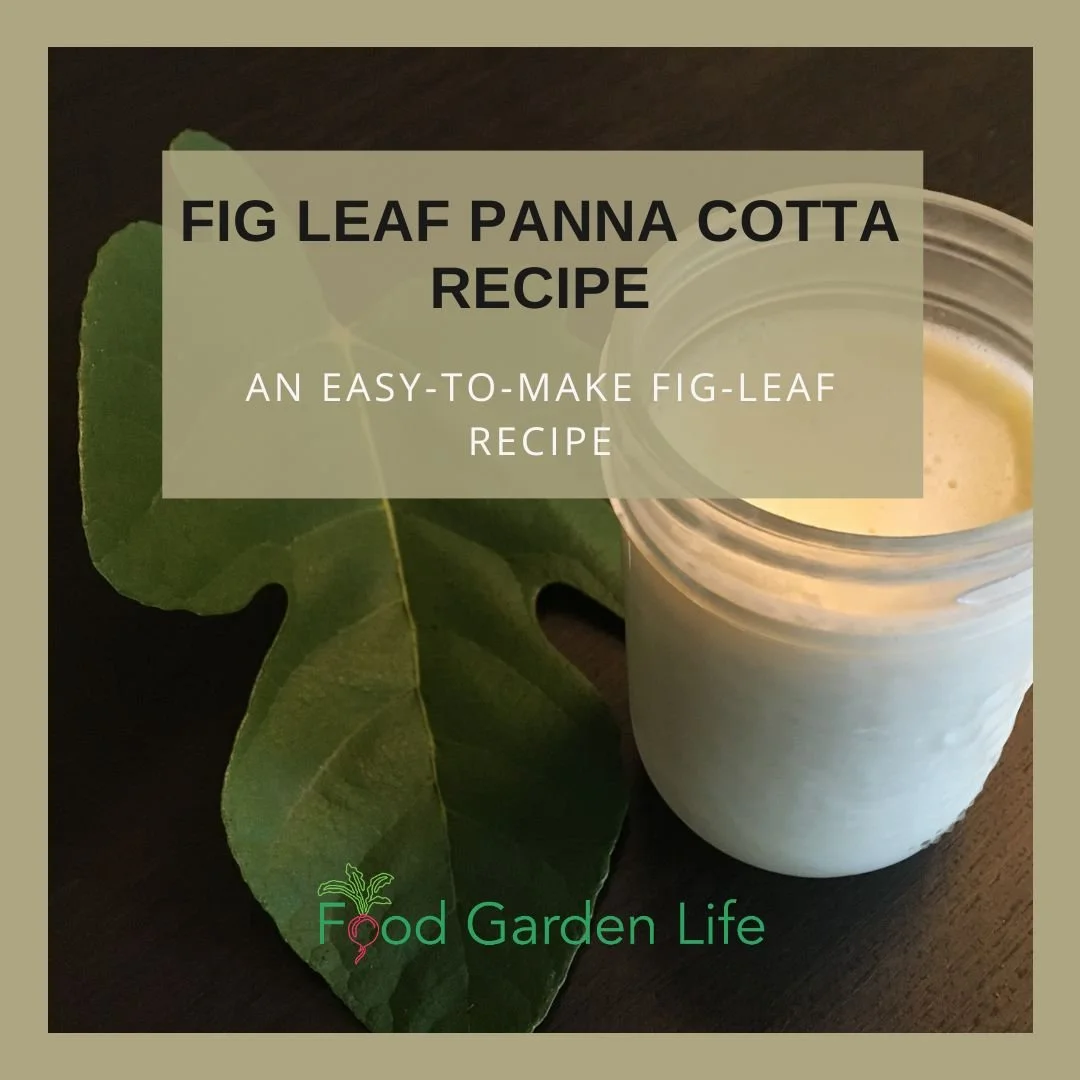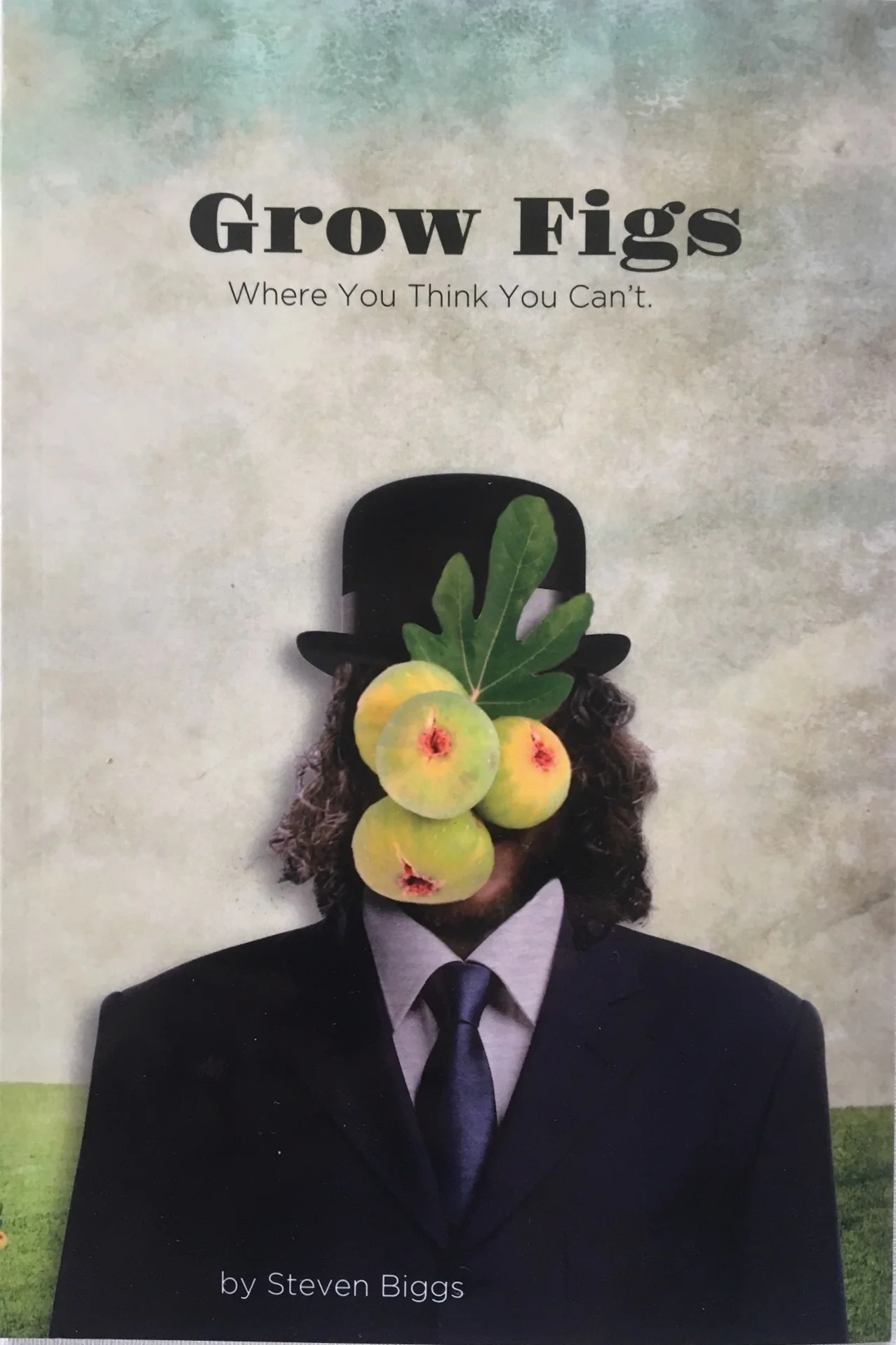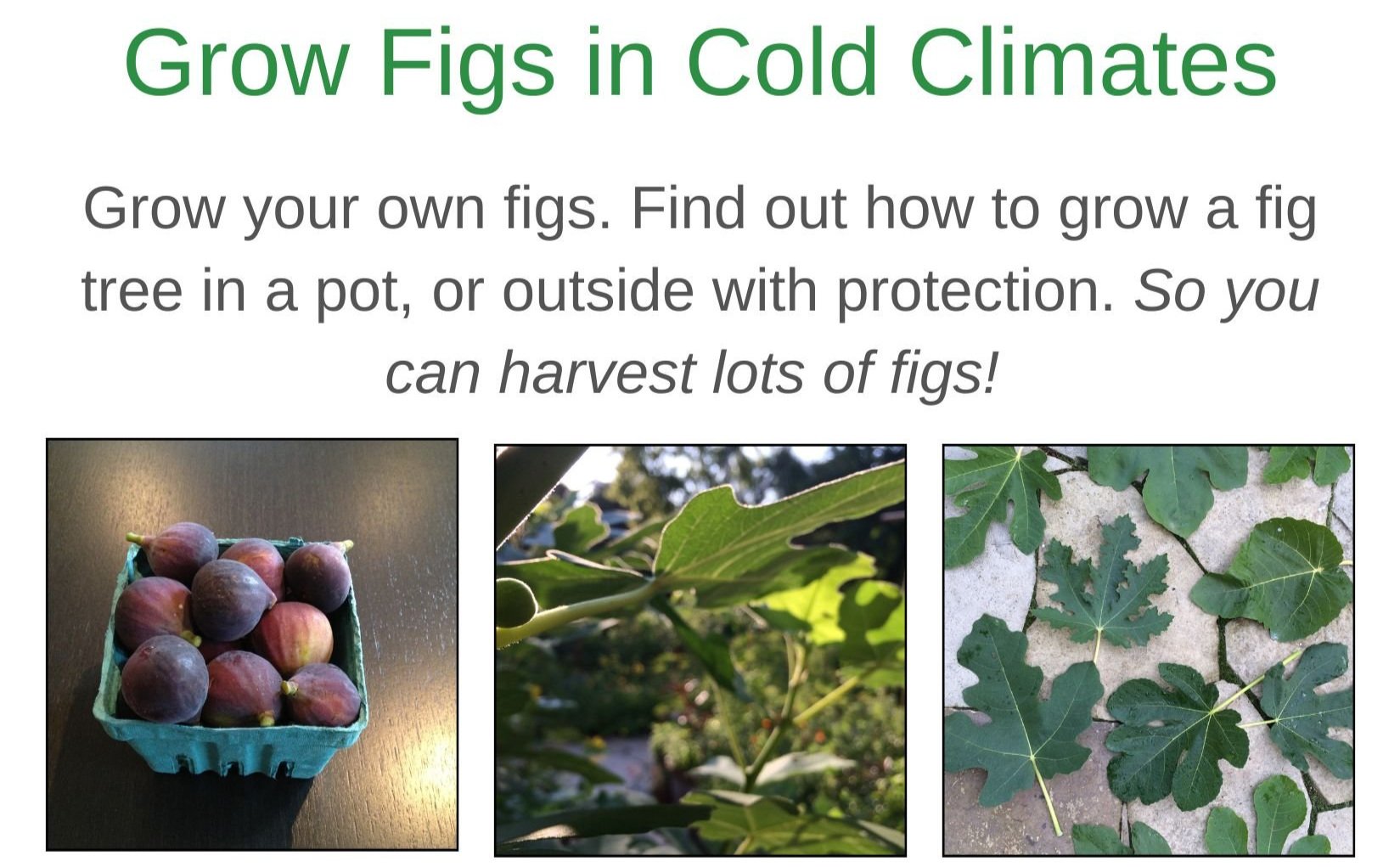By Steven Biggs
An Easy-to-Make Fig-Leaf Recipe
My guests nodded without hesitation when I offered seconds. “Refreshing!” they declared.
Cool, creamy, refreshing fig-leaf panna cotta is a nice way to finish a meal.
(And leftovers are pretty nice for breakfast!)
Cooking with Fig Leaves?
I first learned about cooking with fig leaves when Toronto Chef David Salt got in touch asking for fig leaves. It was October. “Sure,” I said, “Take as many as you’d like, they’ll soon drop.”
Later that fall, David invited me to his restaurant to sample fig-leaf grappa, fig-leaf ice cream, and fig-leaf cheese. (Click here to read about those tasty creations.)
This is an easy-to-make fig-leaf panna cotta recipe.
The idea when using fig leaves in cooking is to extract the flavour of the leaves, and then remove them. They’re pretty fibrous, fine to eat if you’re a goat. If you’ve been around figs trees on a warm day and basked in the sweet smell, that’s the flavour we’re pulling from the leaves.
To me the flavour of fig leaves is somewhere between coconut and toasted almond, but with a note of green.
To me the flavour of fig leaves is somewhere between coconut and toasted almond, but with a note of green.
In her book Dandelion & Quince: Exploring the Wide World of Unusual Vegetables, Fruits, and Herbs, author Michelle McKenzie describes flavours of coconut, pear, and vanilla. (She has other fig-leaf recipes too.)
So is a fig leaf a herb? A veg? I’ll leave you to mull that over.
What’s Panna Cotta?
Let’s back up in case panna cotta is new to you. It was to me.
My family culinary tradition includes custard, where sweetened cream is thickened with egg.
In a panna cotta, sweetened cream is thickened using gelatine.
Panna cotta means cooked cream in Italian—so think of it as a custard set with gelatine instead of eggs.
And here’s something interesting: Fig sap causes milk to coagulate, so in this recipe there are two things at play to give you a thick dessert: The effect of the fig sap, and the gelatine.
Where to Get Fig Leaves
If you grow figs, you’re set. If you don’t grow figs, don’t bother to look at the supermarket—you won’t find them. Instead, find a fig grower in your area.
There are more home fig growers around than you might expect, even in cold places. (If you’re looking for fig growers, here’s a fun chat with Toronto Joe on the ourfigs.com about the online fig community, which could be a good way to find fig growers.)
Getting Flavour from Fig Leaves
When freezing fig leaves, I put them in a stack and then slide that into a resealable freezer bag.
Time is the key to pulling out flavour from the fig leaves. That usually means soaking leaves for a day or two in cream (fat soaks up the flavour).
But if you want to get out the flavour more quickly, use frozen fig leaves. I discovered this when I froze fig leaves for use over the winter. Freezing breaks down the leaf, so the flavour releases much more quickly.
When freezing fig leaves, I put them in a stack and then slide that into a resealable freezer bag. This way it’s easy to remove a few at a time.
Serving ideas for Panna Cotta
Ramekins are a common way to serve puddings, custards, and panna cotta.
I’ve also served fig-leaf panna cotta in mason jars. And one time I used some of the tea cups that my wife Shelley treasures, tea cups that were her grandmother’s. We don’t serve high tea…so it’s nice to be able to use them for something.
Top Tip for Panna Cotta
Ramekins are a common way to serve puddings, custards, and panna cotta. I’ve also served fig-leaf panna cotta in mason jars.
Give yourself at least 6 hours for the gelatine to set. If you’re serving panna cotta for supper, make it first thing in the day – or, even better, the day before.
Once it’s made, cover and refrigerate until you serve it.
FAQ Fig-Leaf Recipes
Can you make fig-leaf panna cotta without sugar?
I like the sweetness…so I’m not sure why you’d do that. But if you’re on a low-sugar diet, consider a sugar substitute for sweetness. I once had guests on reduced-sugar diets, so I used no-sugar, low-calorie monk-fruit sweetener and it turned out fine.
What about fig leaf custard?
Yes, you can make custard with a fig-leaf flavour too. Just steep the fig leaves in the milk or cream for a day or two as you would with fig leaf panna cotta.
Fig Leaf Panna Cotta Recipe
I use frozen fig leaves for this recipe because it’s faster. That way I don’t have a big bowl of cream with fig leaves cluttering up my fridge for a couple of days.
Ingredients
8 fig leaves, frozen beforehand
6 cups of heavy cream or whipping cream
2 cups whole milk
2/3 cup granulated sugar
¼ tsp. salt
2 tbsp. unflavoured gelatine powder
Directions
Soak frozen fig leaves in cream for 2-3 hours (or, if using fresh fig leaves, for 1-2 days – refrigerated)
Remove fig leaves and discard (they’re for the flavour…you don’t eat them)
In a small bowl or cup, sprinkle gelatine over 1 cup of milk and stir to dissolve the gelatine
Put cream, salt, sugar, and the other cup of milk into a saucepan
Heat the saucepan on low until steaming (I never rush heating milk or cream because I’ve burnt them too many times…)
Remove saucepan from heat and stir in the milk-gelatine mixture
Pour into ramekins and refrigerate, covered, until set (usually 4-6 hours)
Hear Chef David Salt Talk About Fig Leaves
Looking for More Garden-to-Table Cooking Ideas?
More on How to Grow Figs
More Fig Articles
Head back to the fig home page to search for fig articles by topic.
Fig Books
Fig Course
Fig Masterclass
The self-paced online fig masterclass gives you everything you need to know to grow and harvest your own figs in a cold climate!
(We also run it live once a year. If you’re interested in knowing when we next run the live online fig “camp” I’ll announce it in my newsletter. Hop on the newsletter list here.)









